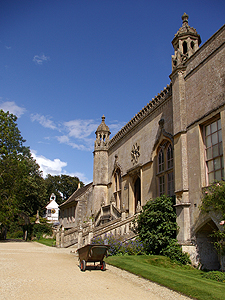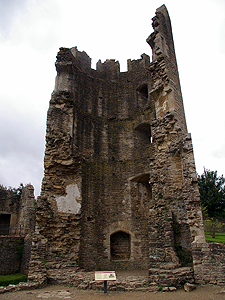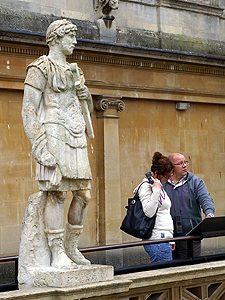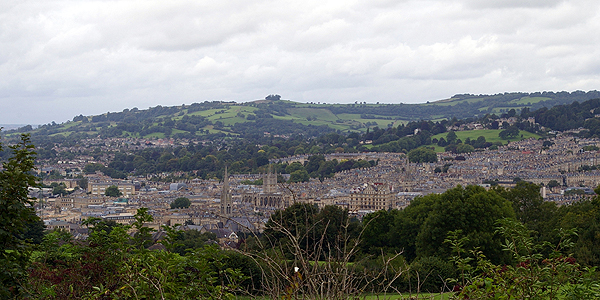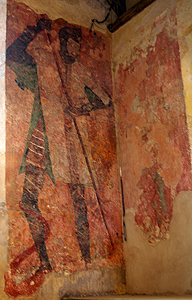Frank's travels around Britain 2009.
Bath.
 The
first thing to say is ... go to the Travelodge called Bath waterside, it is SO
good! By booking early, I got this place at £9 a night. Add to that the location
& views, you have an idyllic spot, within 10 minutes walk from the centre of
England's most beautiful city (in my opinion, of course).
The
first thing to say is ... go to the Travelodge called Bath waterside, it is SO
good! By booking early, I got this place at £9 a night. Add to that the location
& views, you have an idyllic spot, within 10 minutes walk from the centre of
England's most beautiful city (in my opinion, of course).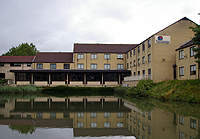
There are two Travelodges in the city, the Bath Waterside is situated on the banks of the Kennet & Avon canal and the River Avon, with views to die for. The village centre of Widcombe is less than 5 minutes walk, with its local shops & pleasant people. (Not to be confused with Widecombe-in-the-Moor on Dartmoor which is well known as the subject of the folk song of the same name, featuring Uncle Tom Cobley and all his friends). Here you can find fast food, pubs, coffee house & all the normal, small village outlets. Walk to the bottom of the car park of the Travelodge & your on the banks of the Avon. It's only 10 minutes, very pleasant walk, to the centre of the city. Roman Baths, the Abbey & all the joys of the city. Although the car park charges £5 per 24 hours, it's cheaper than the ones in the city. It adds cost to your stay but in this case, it's worth the price.
Another feature of the lodge is it's bar cafe. A normal early starter with coffee in an attached Little Chef would cost over £7. Here you can get a breakfast for £7.50 but it's all you can eat. My life, it can set you up for the whole day! (not that it stopped me weakening & having my beloved cream tea one day!) This place comes highly commended. In fact if you get room 117, I can recommend the view!
Right, my now usual bitch about the weather forecast! I am convinced that TV
programs compete with each other to put the worse/best slant on any weather
information they have. As on many trips, if I believed what they said, I'm never
go out of the door! It was going to be so bad, they put out a warning about how
bad the rain would be. Actually, the area got everything. I had bright warm
sunshine, humid overcast, light showers & heavy showers. None of it seemed to
correspond with the local forecast at all, especially if you watched the over
excited ITV mob. (Mind you, they get over excited but C list celebrities that I
have never heard of! To be fair, they've never heard of me either). I cannot
tell if the weather forecast is true, but it missed the area by miles or they
are just trying to get more viewers who find bad news stimulating! (The rant is
now over!).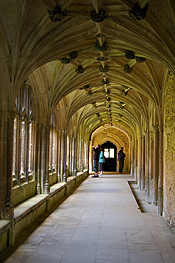
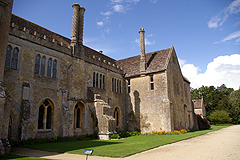 Trying to go somewhere that had cover, (As I was going to be swept away with
all the other tourists) I opted for a return visit to Lacock. It is a truly
lovely place with a museum to the early photographer William Henry Fox Talbot
that is attached to the Abbey where he was born. To be honest, I thought I
would be more interested than I was. The museum is small & full of information
but the only thing I really liked was a collection of cameras. I imagine many
men have stood in front of them saying "I had one of those", me
included. Nevertheless, the Abbey was
stunning.
Trying to go somewhere that had cover, (As I was going to be swept away with
all the other tourists) I opted for a return visit to Lacock. It is a truly
lovely place with a museum to the early photographer William Henry Fox Talbot
that is attached to the Abbey where he was born. To be honest, I thought I
would be more interested than I was. The museum is small & full of information
but the only thing I really liked was a collection of cameras. I imagine many
men have stood in front of them saying "I had one of those", me
included. Nevertheless, the Abbey was
stunning.
The whole village of Lacock is owned by the National Trust and is used as a film and television set, notably for the 1995 BBC production of Pride and Prejudice, the 2007 BBC production of Cranford. The village was used in some of the Harry Potter films. It was used in Harry Potter and the Philosopher's Stone when a flashback scene required Harry's childhood home to be shown and they also used the Abbey interiors to film some scenes for the sixth Harry Potter film, Harry Potter and the Half-Blood Prince. This took place during four days in October 2007. Warner. Bros. announced that the spooky nights of Hogwarts were also filmed here with most of the main characters. By coincidence, that night it was shown on TV. I sat through it looking for the places I'd just been to. It was sort of self inflicted injury. A truly dreadful film that millions loved & do not agree with my opinion. (so what's new?).
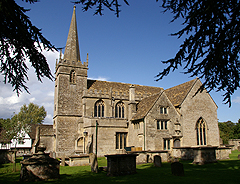 I
had been to Lacock before but not gone to the church. As an atheist, you soon
discover that the history of anywhere is in the church! This time I discovered
Thomas the Tank Engine, well to be honest, the Awdrey family. They are well
represented in the church. Although it is possible that there was a small Saxon
church here it is definite that a Norman church was built towards the end of the
11th century by the two landowners, Edward of Salisbury (Lacock) and William of
Eu (Lackham). The dedication to St. Cyriac commemorates a favourite Norman
saint. It is an unusual dedication in Britain. There are two possibilities.
First is that he was a young Christian deacon martyred by the Emperor Diocletian
and the other, (traditionally recognised at Lacock), that he was a three year
old child killed by the Governor of Silicia in 303 A. D. for supporting the
Christian faith of his mother, Julitta. On level ground not far from the church
Edward's great, great granddaughter Ela, Countess of Salisbury, founded her
nunnery in 1229. The church itself is full of later monuments to the Baynards,
Bonhams, Crokes, Sharingtons, Talbots and of course, the Awdreys.
I
had been to Lacock before but not gone to the church. As an atheist, you soon
discover that the history of anywhere is in the church! This time I discovered
Thomas the Tank Engine, well to be honest, the Awdrey family. They are well
represented in the church. Although it is possible that there was a small Saxon
church here it is definite that a Norman church was built towards the end of the
11th century by the two landowners, Edward of Salisbury (Lacock) and William of
Eu (Lackham). The dedication to St. Cyriac commemorates a favourite Norman
saint. It is an unusual dedication in Britain. There are two possibilities.
First is that he was a young Christian deacon martyred by the Emperor Diocletian
and the other, (traditionally recognised at Lacock), that he was a three year
old child killed by the Governor of Silicia in 303 A. D. for supporting the
Christian faith of his mother, Julitta. On level ground not far from the church
Edward's great, great granddaughter Ela, Countess of Salisbury, founded her
nunnery in 1229. The church itself is full of later monuments to the Baynards,
Bonhams, Crokes, Sharingtons, Talbots and of course, the Awdreys.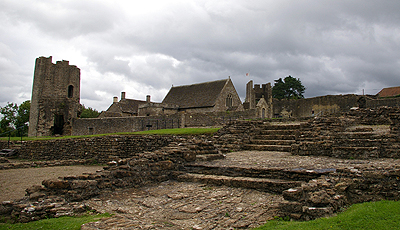
Once again, to avoid the deluge that was promised, I visited Farleigh Castle just 8 miles south of Bath. I went because the weather was bright but overcast & thought I would go to Bath later to avoid the drowning that was obviously imminent. Well preserved & inexpensive (courtesy of English Heritage) its quite a place!
 Farleigh Hungerford was begun in the 1370s by Sir Thomas Hungerford, Speaker
of the Commons, and extended in the 15th century by his son Walter, Lord
Hungerford, distinguished soldier and statesman. The remains of their fortified
mansion include two tall corner towers and a complete castle chapel, crowded
with family monuments and bedecked with wall-paintings. In the chapel's crypt
the coffins of many Hungerford's are still visible, several with attached 'death
masks'. The colourful Hungerford family included two members executed during the
Wars of the Roses and another - who imprisoned his wife here for four years -
beheaded by Henry VIII. A Tudor Lady Agnes Hungerford burnt her murdered husband's
body in the castle's oven. As you can tell, in this castle, it depends how you view the word
colourful!
Farleigh Hungerford was begun in the 1370s by Sir Thomas Hungerford, Speaker
of the Commons, and extended in the 15th century by his son Walter, Lord
Hungerford, distinguished soldier and statesman. The remains of their fortified
mansion include two tall corner towers and a complete castle chapel, crowded
with family monuments and bedecked with wall-paintings. In the chapel's crypt
the coffins of many Hungerford's are still visible, several with attached 'death
masks'. The colourful Hungerford family included two members executed during the
Wars of the Roses and another - who imprisoned his wife here for four years -
beheaded by Henry VIII. A Tudor Lady Agnes Hungerford burnt her murdered husband's
body in the castle's oven. As you can tell, in this castle, it depends how you view the word
colourful!
Inside the Chapel is the best bit. Lead coffins in the Crypt, wall painting &
wonderful tombs. The small museum is worth it too. Try lifting that piece of
chainmail they have. You'd need to be a strong lad to move in it in battle, or
in my case, just move!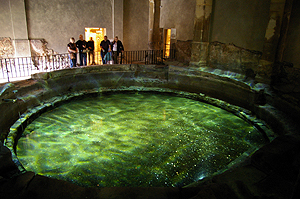
And so on to Bath. Its an obvious statement that I love this city. You can find it all here. Places with good food, reasonably priced, with nice people serving you to the Pump rooms, where they look like they dislike you unless you have a title & charge to keep the riff raff out. (Guess where I didn't eat). Free places to gaze on the truly famous sights like The Royal Crescent or The Circus, on to expensive (but good) sights like the Roman Baths. As a World Heritage site, the world comes here en masse! It wasn't too packed on the Wednesday, but with occasional drizzle & me expecting a typhoon, I did more internal visiting than I normally do.
 The Roman baths are
expensive but really terrific. Well guided throughout and it's all beautifully
displayed but I think the best touch was the circular pool. As you gazed across the
green lit water, with the thousands of coins glinting back at you, you realised
you could hear laughter & splashing water. They had projected a film of
Roman people onto the walls in the half light. It really was evocative of the
past life these baths had seen. It was subtle & seemed to come from nowhere. I
was most impressed. I was expecting a sulphurous smell too, but I was wrong.
Just lots of hot green water.
The Roman baths are
expensive but really terrific. Well guided throughout and it's all beautifully
displayed but I think the best touch was the circular pool. As you gazed across the
green lit water, with the thousands of coins glinting back at you, you realised
you could hear laughter & splashing water. They had projected a film of
Roman people onto the walls in the half light. It really was evocative of the
past life these baths had seen. It was subtle & seemed to come from nowhere. I
was most impressed. I was expecting a sulphurous smell too, but I was wrong.
Just lots of hot green water.
The first shrine at the site of the hot springs was built by Celts, and was dedicated to the goddess Sulis, whom the Romans identified with Minerva. Geoffrey of Monmouth in his largely fictional Historia Regum Britanniae describes how in 836 BC the spring was discovered by the British king Bladud who built the first baths. Early in the eighteenth century Geoffrey's obscure legend was given great prominence as a royal endorsement of the waters' qualities, with the embellishment that the spring had cured Bladud and his herd of pigs of leprosy through wallowing in the warm mud. (You live & learn about stuff, Kings AND pigs got leprosy!). The name Sulis continued to be used after the Roman invasion, leading to the town's Roman name of Aquae Sulis (literally, "the waters of Sulis"). The temple was constructed in 60-70 AD and the bathing complex was gradually built up over the next 300 years. During the Roman occupation of Britain, and possibly on the instructions of Emperor Claudius, engineers drove oak piles to provide a stable foundation into the mud and surrounded the spring with an irregular stone chamber lined with lead. In the second century it was enclosed within a wooden barrel-vaulted building, and included the caldarium (hot bath), tepidarium (warm bath), and frigidarium (cold bath). After the Roman withdrawal from Britain in the first decade of the fifth century, these fell into disrepair and were eventually lost due to silting up, and flooding. The Anglo-Saxon Chronicle suggests the original Roman baths were destroyed in the 6th century.
Little did I know until I returned, that an old friend's dad had plastered the foyer in the Roman Baths and also did the Mosaics in the toilets during their renovations! How's that for real life contact with history?

